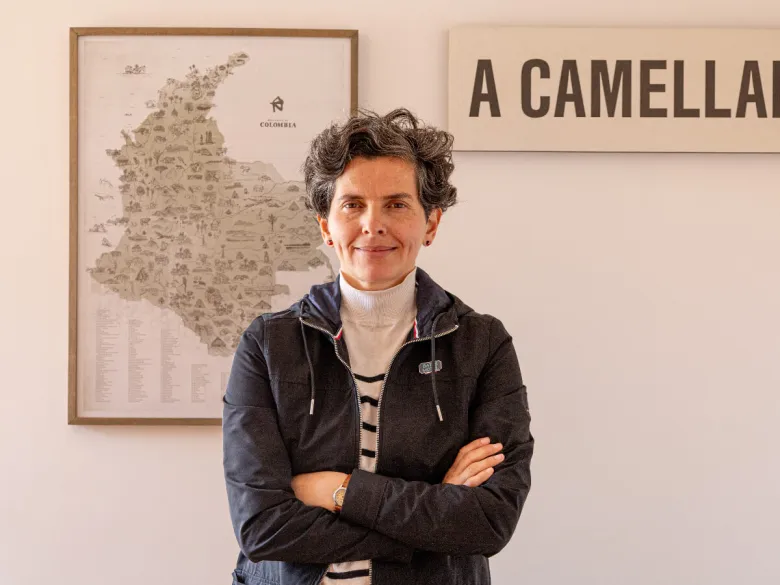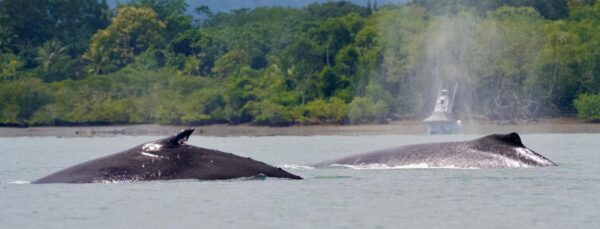Share this post
Carolina Gil, regional director for the Amazon Conservation Team, wrote the following op-ed, published in the Colombian digital news outlet La Silla Vacía (“The Empty Chair”). The original, Spanish version of the piece can be found here.

The Amazon is not just a territory that must be preserved, but a vital system that sustains the climatic, water, and energy balance of the continent. Its defense requires political cohesion, shared responsibility, and a real transformation of current development and conservation models.
Just days before COP30 begins in Belém, it is worth asking what the true purpose of this gathering is. If it is limited to symbolic agreements and repeated promises, the Amazon will continue to be a stage for speeches rather than transformations. But if it manages to realign agendas, acknowledge contradictions —political, economic, and territorial— and place the biome at the center of action, it could mark a real turning point.
From the air, the Amazon looked like a single green body—a continuous tapestry of forest, water, and mist that invited us to see it as a living whole. That “planetary lung,” as it is often called—though perhaps wrongly—does not so much produce oxygen as it regulates the continent’s balance of water, climate, and energy.
But increasingly, that tapestry shows its seams: patches of deforestation, scars of fire, voids where once there was shade and moisture. On the ground, the story is different. Every river speaks a different language, every territory has its own political rhythm, every community carries its own version of the future.
The Amazon has been reduced to a resource reserve
Thinking of the Amazon as a single entity has been an act of goodwill—but also of simplification. That imagined unity helped build global narratives, though at the cost of erasing the differences that make its life possible. What happens in Guainía is not the same as in Napo, or the Guiana Shield, or in the riverside cities of Manaus or Leticia. In this mosaic live Indigenous peoples, river and campesino communities, quilombolas, garimpeiros, and both old and new migrants. They are all part of the same fabric, but from distinct realities and times.
That diversity is—or should be—a strength. Yet it becomes a vulnerability when the region is seen only as a resource reserve or a landscape to preserve. From the Andes to the Atlantic, integration infrastructures—roads, hydroelectric plants, pipelines—advance over the basins with a logic that confuses connection with extraction.
So-called “Amazonian connectivity” does not just link markets: it also breaks the balance among cultures, waters, and soils. Water, which for centuries was the thread that united everything, has become a field of dispute. Dams interrupt its flow, deforestation reduces its regulatory capacity, and mining poisons the rivers that sustain life. Yet the biome continues to be treated as an asset, not as a vital system.
Something similar happens with food. The Amazon is still seen as a biological reserve, but rarely as a space that feeds and is fed. Indigenous, riverine, and peasant peoples sustain an agro-food diversity that could be a lesson for the world: artisanal fishing, chagras (traditional gardens), agroforestry, seeds that travel with the rains and connect entire regions.
On a planet that today depends on just five crops to feed most of its population, the loss of such diversity makes the global system highly vulnerable. Defending the biome also means defending the systems that nourish it—water, food, culture—and with them, the very possibility of future security and sovereignty.
We must expose our contradictions
Today, the pressures on the biome no longer come only from classical extractivism. Under the language of conservation, new forms of control are emerging: capital that turns ecosystems into financial assets, campaigns that paint old models of exploitation green, and global narratives shaped by those who benefited from the crisis. In the Amazon, this economic and symbolic capture is redefining the very meaning of conservation. Cooperation and civil society also face this challenge: to maintain coherence between their discourses and territorial realities, without reproducing the dependencies they claim to transform.
Conservation, when it becomes a mechanism to offset emissions, stops caring for the living and starts managing numbers. We can pay to keep polluting—but does that stop, or even delay, the point of no return? In this global debate, where even influential voices argue that mitigation is enough, we are seeing the dangerous idea take root that the planet can adapt without changing its causes.
But the Amazon is not an adjustment variable or a carbon reserve: it is the system that sustains the flows of water, energy, and stability that make life itself possible. Speaking of the Amazon as the vital asset of the biome’s countries is not a romantic gesture—it is an act of political realism. No market can replace what the forest regulates freely and essentially.
In this context, exposing our contradictions becomes both a political and ethical urgency. It is not enough to defend the forest in international forums while expanding the extractive frontier at home. In the countries of the biome, the future depends on recognizing that conservation is not an environmental luxury but a form of sovereignty and shared responsibility with the more than 400 peoples who inhabit and safeguard the region.
The Amazon is the vital core of the continent, and its fate defines much more than an environmental policy: it defines the possible development model and the kind of humanity we want to sustain. That sovereignty is traversed by diverse interests—some legitimate, even extractive—that must be laid on the table if we want to build real agreements.
Today, territorial control is contested not only among governments, corporations, or peoples, but also against illegal networks that capture governance, distort economies, and fragment the very meaning of the public.
The resources allocated to the Amazon should respond to a vision of shared responsibility, not to systems of compensation or metrics imposed from outside. And above all, we must stop lying to ourselves: we all depend on the stability of the forests—even the technologies that dominate today’s world.
Artificial intelligence, cities, economies—all depend on the water and climate balance that the Amazon still sustains. We cannot afford to be naïve: without that balance, there is no planet.
Reorienting cooperation around that principle—shared responsibility and coherence—may be the most genuine opportunity to turn climate commitments into tangible transformations.
The future is the present, and the present is called Amazonia. There is no time to win, nor forest to lose.
This is a personal reflection and does not necessarily represent the institutional position of the organization to which I belong.
Media Relations
For press release inquiries, please contact us at info@amazonteam.org.




